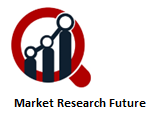The iron ore market plays a crucial role in the global economy as it is the primary raw material for steel production, a foundation for infrastructure and industrial development. Iron ore is mined in various forms, including hematite, magnetite, and goethite, with hematite being the most commonly traded due to its high iron content and ease of processing. The market dynamics of iron ore are shaped by supply-demand factors, geopolitical considerations, and technological advancements.
Key Producers and Consumers
A handful of major producers, including Australia, Brazil, and China dominates the global iron ore market. Australia and Brazil together account for more than half of the global iron ore exports, with companies like Rio Tinto, BHP, and Vale leading the production. China, the world’s largest steel producer, is also the largest consumer of iron ore, importing vast quantities to fuel its industrial activities. India, Russia, and South Africa are other significant contributors to global iron ore production.
Demand Drivers
Steel production is the primary driver of iron ore demand. Over 98% of iron ore mined globally is used in steel manufacturing, which is integral to construction, automotive, shipbuilding, and machinery industries. Urbanization and industrialization in emerging economies, particularly in Asia and Africa, have driven demand for steel and, consequently, iron ore. The rise of renewable energy projects and green infrastructure has further boosted demand for high-quality steel, underpinning the importance of premium-grade iron ore.
Supply-Side Dynamics
Iron ore production is highly capital-intensive and dependent on geographical and geological factors. Australia and Brazil benefit from vast reserves of high-grade iron ore and advanced mining infrastructure, allowing them to dominate global exports. However, supply disruptions, such as adverse weather, labor strikes, and geopolitical tensions, can significantly impact the market. For instance, Brazil's Vale faced disruptions after the Brumadinho dam disaster in 2019, tightening global supply and driving up prices.
Key Companies in the Iron Ore market include
Vale
Rio Tinto
BHP
Fortescue Metals Group Ltd
Ansteel group corporation limited
ArcelorMittal
METALLOINVEST
Cleveland-Cliffs Inc
HBIS GROUP
Anglo American
Market Trends
The iron ore market has witnessed fluctuating prices due to changing demand-supply dynamics and external factors. In recent years, the COVID-19 pandemic caused volatility as demand plummeted initially before rebounding with global economic recovery. In 2021, prices peaked due to strong Chinese demand, followed by a correction as China's government imposed production cuts to reduce emissions.
Technological advancements are shaping the market by improving mining efficiency and ore beneficiation. Automation and AI-driven solutions are enhancing operational efficiency, while efforts to reduce environmental impact have driven innovations in waste management and carbon reduction.
Challenges and Opportunities
The iron ore market faces challenges, including resource depletion, environmental concerns, and geopolitical risks. Sustainability has become a central focus, with pressure on miners to adopt green practices and reduce carbon footprints. Additionally, geopolitical tensions, such as trade disputes and sanctions, pose risks to supply chains and trade flows.
However, opportunities lie in the growing adoption of electric arc furnaces (EAF) in steelmaking, which use scrap steel alongside high-quality iron ore. The increasing emphasis on green infrastructure and renewable energy projects also supports long-term demand for steel and iron ore.
Future Outlook
The iron ore market is expected to remain robust, supported by ongoing infrastructure development and industrialization in emerging markets. While short-term fluctuations may occur, driven by economic cycles and policy changes, the long-term outlook is positive as demand for steel continues to grow. Investments in sustainable mining practices and technology will be critical to ensuring the market's resilience and aligning with global sustainability goals.



